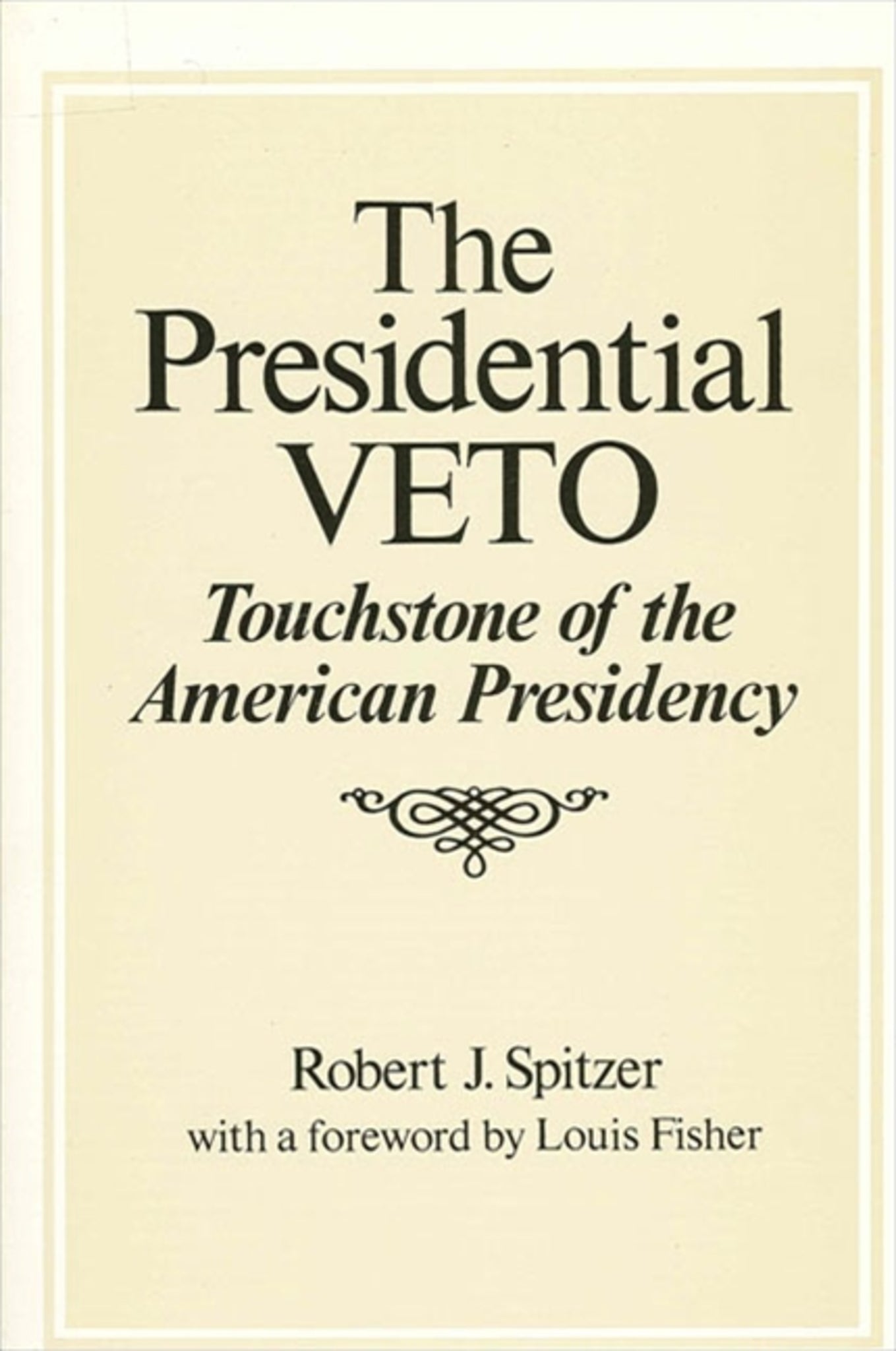We're sorry. An error has occurred
Please cancel or retry.
The Presidential Veto

Some error occured while loading the Quick View. Please close the Quick View and try reloading the page.
Couldn't load pickup availability
- Format:
-
01 September 1988

This is the first modern study of the veto. In addition to tracing the genesis and historical evolution from Ancient Rome, through the ultimate inclusion in the Constitution, it also explores the veto's consequences for modern presidents. In doing so, Spitzer promotes a key argument about the relation between the veto power and the Presidency - namely, that the rise of the veto power, beginning with the first Chief Executive, is symptomatic of the rise of the strong modern Presidency, and has in fact been a major tool of Presidency-building.
A special and revealing irony of the veto power is seen in the finding that, despite its monarchical roots and anti-majoritarian nature, the veto has become a key vehicle for presidents to appeal directly to, and on behalf of, the people. Thus, the veto's utility for presidents arises not only as a power to use against Congress, but also as a symbolic, plebiscitary tool.


"This is a clearly presented, well documented, balanced analysis. The author offers a great deal of information about the growth and use of the presidential veto. It is also a very useful book because it brings together much material on a widely studied topic." — Morris S. Ogul
"This book is extremely well written. What I like most is the way the author explains the historical development of the veto power and makes it relevant to the present nature of the presidency. He presents enough detail to fully understand the context of developments, yet not so much detail as to bore the reader or lose sight of the main point he is making. The research is very thorough and the scholarship is sound. The book is interesting to read, and the author has a good sense of humor and a fine feeling for irony." — James P. Pfiffne
Acknowledgments
Foreword
Introduction
1 The Creation of the Veto
Antecedents of the veto
The English tradition
The veto in America
The federal convention
Conclusion
2 Evolution of the Veto Power
The first vetoes
The Jacksonian veto
Harrison and the Tyler crisis
Polk and the maturing veto
The end of the veto controversy
Conclusion
3 The Modern Veto
A summary assessment
Empirical assessments
Central clearance and the enrolled bill process
Private bills and the veto
The veto in the hands of modern presidents
Two cases
The veto threat
Conclusion
4 The Pocket Veto
How the pocket veto works
What did the founders know, and when did they know it?
Evolution of the pocket veto
Persisting pocket veto ambiguities
Must presidents explain pocket vetoes?
When does the ten-day period begin?
Conclusion
5 The Item Veto Controversy
Definition
Background
Would the founders have approved?
Evolution of the clamor for the item veto
The item veto and the budget process
Porkys, two?
The gubernatorial item veto as a model
The potency of existing veto powers
Other powers that mimic the item veto
What constitutes an item?
Conclusion: Things are seldom what they seem...
6 Conclusion
From monarch to plebiscitarian
The veto: Power and symbol
Appendix
Notes
References
About the Author
Index



